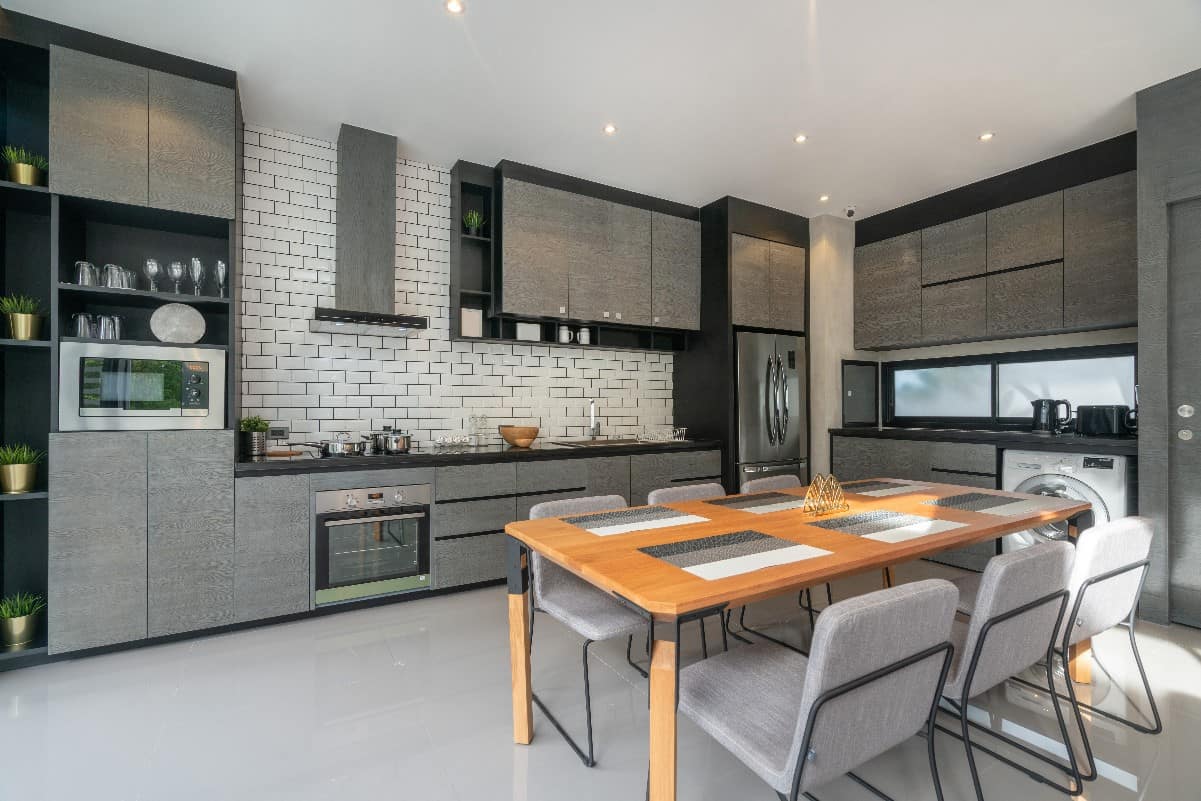
When designing lighting for a living room with a kitchenette, try to maintain consistency and balance throughout the space. Make sure that it is kept in the same style. If you want to install a glass fixture, make sure the color of the exposed metal coordinates with other metallic accents found in the interior. An open-plan space requires clever use of lighting to highlight different zones. Check out what you should pay special attention to!
The lighting scheme you choose for a large, open space can help create a cozy atmosphere. Lamps for the living room should combine aesthetic and practical qualities.
A pendant lamp over the island highlights the character of the area and also emits a shadowless task light. Meanwhile, decorative lamps in the lounge area will provide a glow during evening entertainment. Wall sconces and lamps, on the other hand, will not only decorate the interior but also accentuate smaller areas.
The key to zoning your space is to use enough circuits to control groups of lights independently. Remember, you can make it visually larger or smaller, depending on the living room lighting you choose.
When preparing your design, consider some basic aspects: colors, materials and finishes. Suppose you have a gray kitchen countertop and green or blue accessories. Match them with vases, throws, floor lamps and pendant lights in green or blue
When designing the right lighting for an open space, be creative. Many times you have to deal with a limited number of outlets. A classic arched floor lamp is a great solution. You can also think about atmospheric downlights.
General lighting plays an important role and is a great way to fill a room. However, it may not illuminate the entire room well. Categories of general lighting include chandeliers, pendant lights, wall sconces, ceiling fixtures, recessed LED lights, and a ceiling fan included with a lighting kit.
A task light highlights specific areas. It will work great next to an armchair or over a table. You can place a table lamp or floor lamp. Some pendant lamps, wall sconces and decorative lights will also work well
Finally, you should pay attention to accent light, which has a decorative function. It will bring a unique atmosphere to the interior of your home. It can also add a soft glow in specific areas. Spot lighting will highlight artwork and other decorations. For example, in the Scandinavian style, you can bet on timeless wood or a contrasting shade to the “gentle” furniture – yellow, mint, navy blue.
Some things may seem obvious. However, we have a few tips to follow when shopping. Pay attention to the number of bulbs and the amount of light they emit (measured in watts or more accurately in lumens). Consider what the distance between the lamp and other important objects should be. See how light reflects off objects and surfaces. There is a rule of thumb here. Darker surfaces absorb light, while lighter walls reflect it better
Also consider the type of bulbs and the color temperature. The lower the Kelvin number, the more yellow and warmer the light. With a high Kelvin number, the light is white or blue
A recessed fixture is usually mounted on the ceiling. It is made up of two components: the housing and the trim. The first component is built into the ceiling, wall or floor. It consists of a light source, fixture and other electrical parts. In turn, the strip gives the lamp an aesthetic appearance. Modern fixtures fit perfectly in places with visible ceiling beams and without plasterboard.
Choosing lamps for a living room with a kitchenette will certainly be easier! It is worth to keep the consistency and at the same time the interior is well illuminated. You can also get ideas for additional lighting by using for example bottles, jars or other types of glass. Here you are limited only by your imagination.